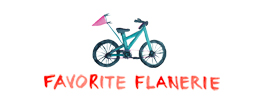Over the years, I’ve found that one of the key marketing elements many businesses struggle with is their logo. It’s one of the most basic components of a good branding and marketing strategy, and yet, it’s also something that often creates the most headache and confusion. Developing a single image that adequately conveys your company’s offerings is a daunting task. And, you don’t just want it to “adequately convey.” You want it to ATTRACT customers to your products and services. Add to that the personal stake most entrepreneurs and small business owners have in the way their life’s work and passion is portrayed, and the logo development process can produce trepidation in even the most seasoned client.
I’ve been thinking and talking a lot about logos lately with a few Small Pond clients who are in the thick of the logo development process. In addition, I’ve had several colleagues and friends approach me to help them evaluate their business logos to try and gauge effectiveness. Whether it’s a completely new concept or an image you’ve been using for years, how do you know if your logo design could use a tune-up? How can you make this key piece of your marketing plan work to your best benefit? It’s true that when used consistently, almost any image you’ve chosen can come to be associated with your business over time. But, is what you’re using really matching the achievement and potential of your ideas, your products and your services? In my conversations, I’ve been stressing a few questions to consider when judging whether a logo is really working for you.
Is it FLEXIBLE? Is your logo readable in both large and small applications (billboards to business cards, jumbotron to iphones)? Can it be used in both horizontal and vertical formats? Does it convey your image just as well in one color as in full color? Flexibility is the key to consistency. And consistency will make or break your logo’s effectiveness. Make sure the logo design you adopt has the flexibility to serve the breadth of your marketing needs.
Does it have LONGEVITY? Does it strike a balance between timely and timeless? Does it give your image a “look” that is independent of trends? Will it represent your business appropriately 10 years from now? The worst marketing investment you can make is in a logo design that will be dated in a year, or even two. When your logo is too trendy, your customers’ confidence level can take a hit. An outdated logo creates the impression that your products, services and abilities are outdated as well. On the other hand, a logo that maintains a timeless image has the added benefit of upping the professionalism-quotient of your business.
Is it APPEALING? Does it create positive impressions of your business among your specific customer base AND the general marketplace? Does it cause your business to stand out in the crowd? Does it encourage the audience to take a longer look? Your company logo is never going to appeal to everyone. That’s just an unrealistic goal, but consider your specific target audience when determining the imagery and typefaces used in your logo. You want potential customers to make favorable associations with your choices. In addition, you want your choices to produce interest and curiosity in the broader audience.
Is it APPROPRIATE? Does it reflect the reality of what you do? Does it communicate what you have to offer and your business style? Does it interpret your company goals and services for the public? Does it create the image you want your business to be known for? Part of developing an effective logo is helping your customers draw a line between your company’s image and what you actually offer, how you actually deal with customers and your actual approach to business. One should reinforce the other. An appropriate logo helps the audience recognize the “tone” of what you have to offer and how you’ll relate to them in a real-life encounter.
Are you using it CONSISTENTLY? As I mentioned earlier, consistency will make or break your logo’s effectiveness. Even the most well-designed, timeless, appealing, appropriate and flexible logo won’t be effective if it is not used consistently in your marketing efforts. Don’t compromise when it comes to presenting your business to the public. Include your logo on every piece of information about your business that your customers will see. Invest in licenses for the typefaces used in your logo so that they can be applied to other items like proposal headings or even invoices. Be watchful with vendors and advertising outlets to ensure that your logo is being used correctly on promotional items. This consistency will help your audience begin to automatically associate the logo with your business, products and services.





 Hello & welcome! I’m Haley Montgomery, and I’m the designer and owner of
Hello & welcome! I’m Haley Montgomery, and I’m the designer and owner of 















